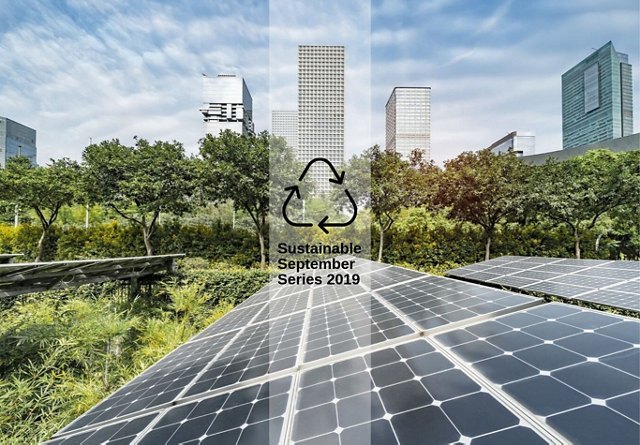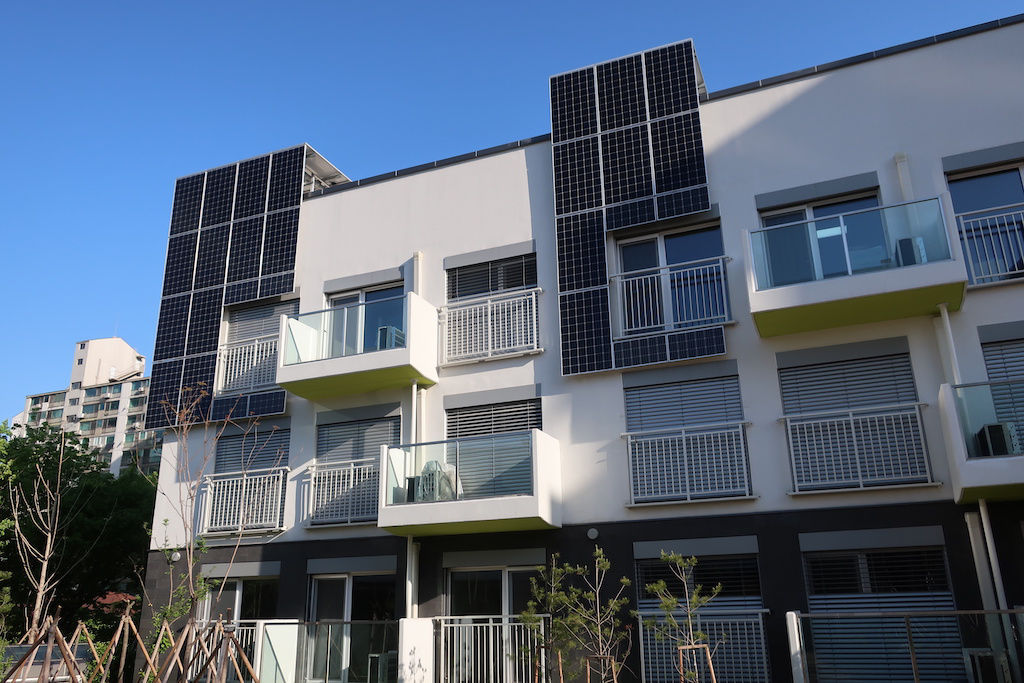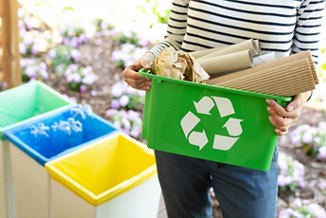Certified Green: A Q&A with Greystar’s Senior Associate of Sustainability
Sustainability is vital to the mission of Greystar, and their strategic efforts have far-reaching implications. For insight into the benefits and scope of their dedication to green living, check out this in-depth Q&A with Greystar’s Senior Associate of Sustainability, Lexie Goldberg.
From an explanation of Leadership in Energy and Environmental Design (LEED) Certification to the impact of green buildings, here's a first-hand look into our company’s green initiatives during our Sustainable September blog series.
Why does sustainability matter to Greystar?
Lexie Goldberg: Our mission is to enrich the lives we touch by doing things the right way. Sustainability feeds right into this and is core to our business and each of our stakeholders. We believe that energy management, promoting health and well-being and using sustainable practices help to preserve the environment for future generations. It also enhances the financial value and increases the resilience of the communities we own and manage. Greystar is fundamentally committed to minimizing its environmental impacts through continuous improvement of its energy performance and through sustainable operating practices. Making even a small change across our global portfolio has an enormous impact on our industry and the future environment.
What steps are required for a property to be LEED certified?
Goldberg: The most common path properties take to get certified is during development. During design, the developer and architect will work together to determine which certification to pursue and what level of certification to aim for. This decision, in conjunction with the location and surrounding area, affect many of the choices made in the design and development of the building – including major building systems such as HVAC (heating, ventilation and air conditioning), building metering strategies for water and energy, amenities, materials used and any innovation credits they may be working towards. LEED BD+C (Building Design and Construction) looks more at the site location, building materials and design and is the most common certification sites pursue, but it is also possible for a site to become LEED certified as an existing building under LEED O+M (Operations and Maintenance), which looks more at how a site is performing and being maintained.
How many Greystar properties are LEED certified?
Goldberg: Based on the 2019 Greystar Green Award responses, 159 Greystar sites are LEED certified at some level. The Green Awards are an annual, site-reported survey that allow us to measure and benchmark sites against each other. It looks at several areas critical to sustainability, including energy efficiency, water conservation, indoor environmental quality, recycling and resiliency. The survey is reviewed and updated annually to remain in line with LEED and other environmental, social and governance standards such as GRESB (Global Real Estate Sustainability Benchmark).
How are Greystar employees encouraged in these efforts?
Goldberg: Greystar team members are encouraged via the Greystar Green Awards. Sites with the highest performance receive recognition for being a Greystar Sustainable Site. Greystar also uses an internal communication tool to educate our team members on new LEED projects and how they reduce environmental impact. There is a dedicated team committed to the cause, which paves the way for sustainability programs such as the paperless initiative.
What are the benefits of green buildings?
Goldberg: Buildings have an enormous impact on the environment and account for nearly 40% of global greenhouse gas emissions. Green initiatives can maximize the economic and environmental performance of buildings while reducing negative impacts. Some specific benefits related to green buildings include:
• Structural and material efficiency
• Energy efficiency
• Water efficiency
• Enhanced indoor air quality
• Waste reduction
• Lower operational costs
• Enhanced resident engagement and recognition
• Tax and financing benefits
How does a green building compare to a non-green building?
Goldberg: Green buildings are designed to reduce or eliminate negative impacts and, in some cases, even create positive impacts on our climate, human health and the surrounding environment. They do this by efficiently using resources such as water and energy, reducing waste and pollution and even protecting occupant health. While some of these considerations may be integrated into a “non-green” building, green buildings look holistically at the overall impact and ways in which to reduce them.
Why should investors/builders go green?
Goldberg: Green buildings traditionally use less water and energy and create less waste. While there may be a premium seen up front for getting a certification such as LEED, the benefits outweigh the initial costs once you see the savings in the operations and maintenance of that building. Green buildings can also attract residents and are a great opportunity to showcase the systems and amenities in place that will allow each resident to live a more efficient, healthy and productive life.
What is maintenance like?
Goldberg: We must maintain these buildings according to the standards and systems that they were built with. Green buildings typically have more advanced systems, such as HVAC and Solar PVs in place to ensure higher efficiency and enhanced performance. However, it is critical that these systems are maintained correctly. Otherwise, you could see a green building become less efficient operationally than a non-green building, if not managed properly. It is key for maintenance and property staff to have an understanding as to what systems are in place on site and how to best maintain them.
As the topic of sustainability continues to rise in importance, Greystar will continually strive to support LEED projects and identify new products, services and certifications that can help team members and customers reduce waste and resources.
Check out these other Sustainable September 2019 blog posts:
- Here are ways you and your apartment neighbors can make your fashion choices green.
- From 11 eco-friendly kitchen products and green activities to kids, our blog has so many more offerings from past Sustainable Septembers. Here are all of our past articles, curated just for you.
The information presented on or through this Website is made available solely for general information purposes. We do not warrant the accuracy, completeness, or usefulness of this information. Any reliance you place on such information is strictly at your own risk. We disclaim all liability and responsibility arising from any reliance placed on such materials by you or any other visitor to this Website, or by anyone who may be informed of any of its contents. Any reference to amenities, services, rules, policies, or procedures at a Greystar apartment community is general in nature, and each Greystar apartment community may have amenities, services, rules, policies, and procedures that differ from those referenced on this Website. Please consult with your Greystar apartment community for the exact amenities, services, rules, policies, or procedures applicable.
This Website may include content provided by third parties, including materials provided by other users, bloggers, and third-party licensors, syndicators, aggregators, and/or reporting services. All statements and/or opinions expressed in these materials, and all articles and responses to questions and other content, other than the content provided by Greystar, are solely the opinions and the responsibility of the person or entity providing those materials. These materials do not necessarily reflect the opinion of Greystar. We are not responsible, or liable to you or any third party, for the content or accuracy of any materials provided by any third parties.






